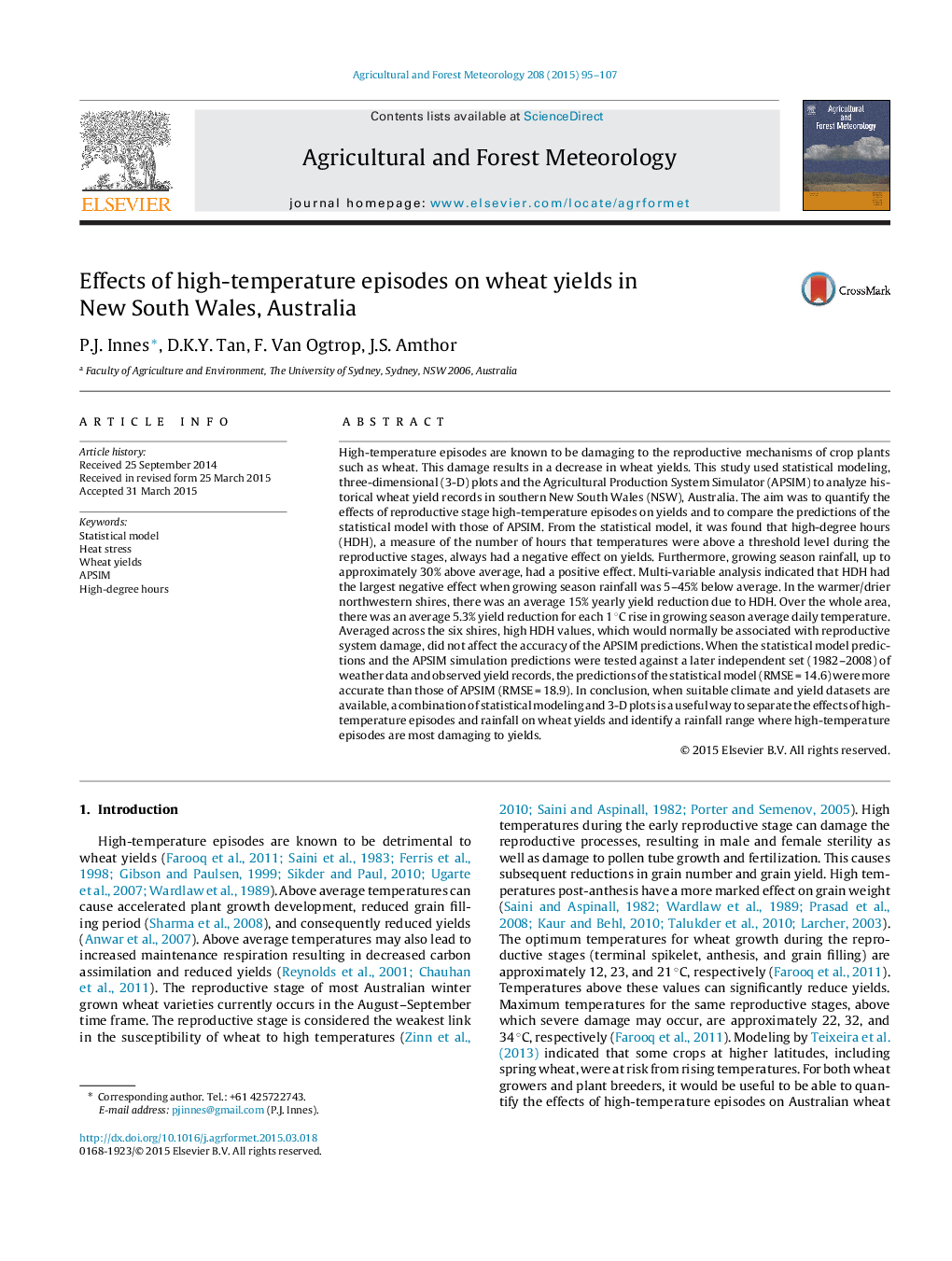| Article ID | Journal | Published Year | Pages | File Type |
|---|---|---|---|---|
| 81596 | Agricultural and Forest Meteorology | 2015 | 13 Pages |
•Statistical and APSIM analysis of heat effects on wheat yields in Australia.•3-D graphical analysis of rainfall vs. high-degree hours vs. wheat yields.•High-degree hours (HDH) mostly had a negative effect on wheat yields.•HDH caused the most damage in seasons with 5–45% below average rainfall.•The statistical model predictions were superior to APSIM predictions.
High-temperature episodes are known to be damaging to the reproductive mechanisms of crop plants such as wheat. This damage results in a decrease in wheat yields. This study used statistical modeling, three-dimensional (3-D) plots and the Agricultural Production System Simulator (APSIM) to analyze historical wheat yield records in southern New South Wales (NSW), Australia. The aim was to quantify the effects of reproductive stage high-temperature episodes on yields and to compare the predictions of the statistical model with those of APSIM. From the statistical model, it was found that high-degree hours (HDH), a measure of the number of hours that temperatures were above a threshold level during the reproductive stages, always had a negative effect on yields. Furthermore, growing season rainfall, up to approximately 30% above average, had a positive effect. Multi-variable analysis indicated that HDH had the largest negative effect when growing season rainfall was 5–45% below average. In the warmer/drier northwestern shires, there was an average 15% yearly yield reduction due to HDH. Over the whole area, there was an average 5.3% yield reduction for each 1 °C rise in growing season average daily temperature. Averaged across the six shires, high HDH values, which would normally be associated with reproductive system damage, did not affect the accuracy of the APSIM predictions. When the statistical model predictions and the APSIM simulation predictions were tested against a later independent set (1982–2008) of weather data and observed yield records, the predictions of the statistical model (RMSE = 14.6) were more accurate than those of APSIM (RMSE = 18.9). In conclusion, when suitable climate and yield datasets are available, a combination of statistical modeling and 3-D plots is a useful way to separate the effects of high-temperature episodes and rainfall on wheat yields and identify a rainfall range where high-temperature episodes are most damaging to yields.
